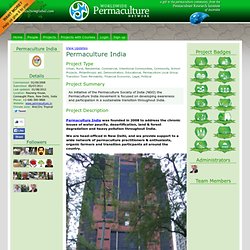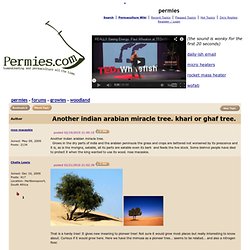

Survival Food Series: 3 Ways To Naturally Make Yeast. Where would we be without the discovery of yeast?

Fresh, puffy bread would be non-existent, and need I not mention the fact that beer, wine and alcohol products would cease to exist. Of course, all yeasts were not created equal. Some yeasts are made for making bread and baked goods, and some yeasts are made for distilling spirits. Knowing ways of making this essential prep would be beneficial to anyone trying to live off of the food supply they have. Grains, vegetables and fruits are three of the easiest ways to find yeast. How Does It Work? Did you know that yeast is actually alive on plants?
By using this method, however much water the recipe calls for is how much water to soak the fruit, vegetable, herb or grain in. Grains In the book, The Little House Cookbook, Ma Ingalls explains how she ferments her bread dough using what she has on hand,”You start it by putting some flour and warm water in a jar and letting it stand till it sours…”Then you use it, always a little. Guide pour réaliser son jardin alimentaire sur les toits. How one group of plants help regrow an entire forest. Legumes rise to meet the challenge of deforestation, scientists have found.

Skip to next paragraph Subscribe Today to the Monitor Click Here for your FREE 30 DAYS ofThe Christian Science MonitorWeekly Digital Edition A team of researchers report in Nature that legumes, which fix atmospheric nitrogen into a useable form for other plants, grow faster than other trees in the earliest phase of a forest’s re-growth. The find highlights the pivotal role that just one group of plants – in collaboration with some useful bacteria – plays in growing up an entire forest that, as a carbon dioxide absorber, ultimately becomes the entire planet’s ally against global warming.
“This is a group of species that are helpers to the rest of the forest,” says Lars Hedin, a professor at Princeton University and a co-author on the paper. “It’s super cool,” he adds. Forests, as it is now well known, are prodigious sappers of the atmospheric carbon dioxide that would otherwise contribute to global warming. Living With Nature IndianOrganic.Com. The interactive map and database of the Worldwide Permaculture Network. Legend of Badges Note: The various badges displayed in people profiles are largely honesty-based self-proclamations by the individuals themselves.

There are reporting functions users can use if they know of blatant misrepresentation (for both people and projects). Legitimacy, competency and reputation for all people and projects can be evidenced and/or developed through their providing regular updates on permaculture work they’re involved in, before/after photographs, etc. A spirit of objective nurturing of both people and projects through knowledge/encouragement/inspiration/resource sharing is the aim of the Worldwide Permaculture Network. View Updates Permaculture India Project Type. Www.arvindguptatoys.com/arvindgupta/pippatrees.pdf. Google. Another indian arabian miracle tree. khari or ghaf tree. (woodland forum at permies) Introduction Khejri (खेजडी or Prosopis cineraria is a small to medium size tree, found mainly in the Thar Desert of Rajasthan.

DryLand Permaculture. Recherche documentaire climat sec. Lahaul & Spiti District, Himachal Pradesh, India. Sustainable agriculture is highly difficult in mountain areas because of fast decreasing soil fertility, high degree of fragile topography and consistent soil and water erosion problems.

The frequent land slides in the fragile eco-system often lead to fast depletion existing forest cover. The cold desert in Himachal Pradesh constitutes 42% of the total geographical areas. These areas suffer from acute shortage of fuel wood, fodders apart from soil and water erosion problems. Even though many engineering structures have been raised to protect these fragile eco-system, but all in vain. In these extreme climatic conditions, environmental protection and conservation are Himalayan tasks.
Seabuckthorn has great potential for sustainable environmental protection and commercial exploitation in cold desert areas of Himalayas. Even though this plant grows naturally in the cold desert area, it has not been given sufficient emphases for its environmental and economic benefits. Www.nabard.org/fileupload/databank/occasionalpapers/oc 38.pdf. Training Centre for Organic Farming, Training Course on Organic Farming for Farmers, Uttarakhandi Cuisine. Agronomy- Jojoba Farming Cultivation Technology,Jojoba Plant cultivation,Organic Jojoba plantation India.
Jojoba has the distinction of being the domesticated plant successfully in desert of Rajasthan, India.

The methods used by jojoba farmers in the past have been varied, as there were no real records of the performance of cultivated plants in existence. Subsequent research, however, has led to a greater understanding of the classic farming requirements for jojoba. Jojoba has very promising scope for cultivation in the desert even in the relatively hot weather.
Its nature withstands the hot weather in summer, warm weather in winter, low fertility of soil and low water resources. It needs less than one quarter the amount of water needed for olives with great ability to withstand the high salt in the soil. Soil texture is important as jojoba grows best in sandy or decomposed granite or rocky soils and slowest in heavy clay soils such as adobe. Irrigation systems are a must when establishing jojoba plantations whether by planting seeds or seedlings.